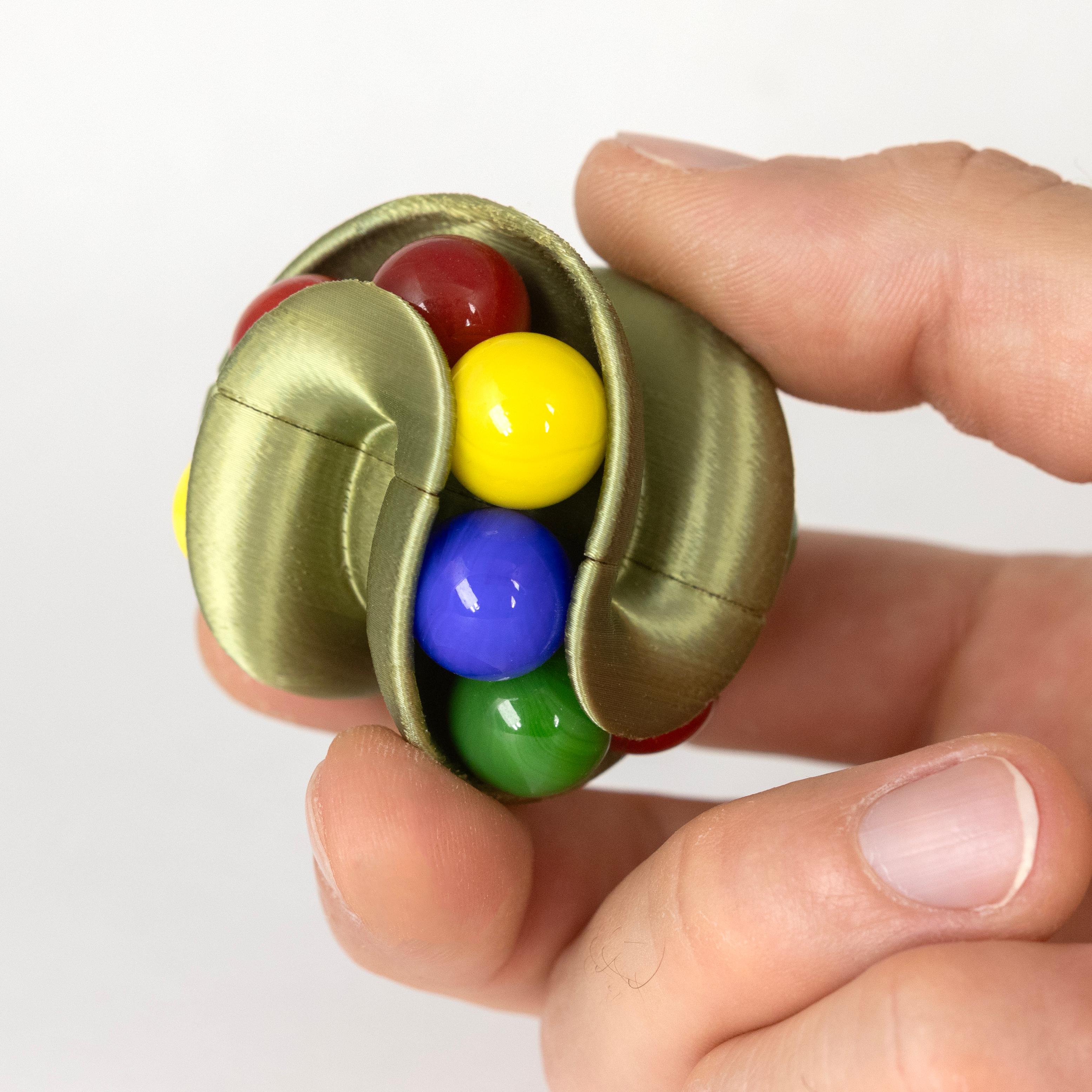Smaller. Simpler. Still super satisfying!
It's the wonderful rolly, twisty, magnetic magnificence of my Astrolabicon Puzzle... but mini! Great if you want an easier puzzle without losing that fun fidgetability (yup, I made up two words in the first paragraph)
Rotate the two halves of this twisting sphericon and move the marbles along its shifting track to rearrange them until all like colors touch. The classic difficulty is to have 4 different colors, with 3 marbles of each color for a total of 12. Lil Astro has been designed for use with 14mm ABS or Acrylic no hole beads (actual diameter is ~13.6mm) or standard 9/16" marbles!
Just like the Astrolabicon Pro, this puzzle includes a clip that snaps the two halves. It also uses 8 6mmx3mm (1/4"x1/8") neodymium magnets for a smooth and satisfying snap between positions. The magnets should fit snugly in the holes and you may need to use a flat surface to press fit the magnets flush. I also use E6000 craft adhesive to make sure the magnets are absolutely fixed in place. I like to use ABS filament for the clips for longevity, but I've also successfully used PLA and PETG.
This download also includes my assembler.stl part, which makes it easier to snap the two halves of the puzzle together, since it can be a bit tricky to close without losing your marbles... although it's much easier with this simpler version of the Astrolabicon.
Sources for non-printed parts:
14mm no hole ABS beads • eBay • or these Chinese Checkers Beads on Amazon
6mmx3mm Neodymium magnets
E6000 Craft Adhesive • Amazon
Please feel free to ask questions in the comments and share your experiences and insights. Enjoy the puzzle and leave a tip if you'd like to support my ongoing work :)
A really well tuned printer will be able to print this entirely without supports, even though there are some tricky overhangs. If you do decide to print with support material, block supports for the center hole and magnet holes, as those areas bridge just fine.
Default print settings:
• lil-astro-orb.stl - 0.1 to 0.2mm layer height*, 3-4 perimeters/shells, 6-8 top/bottom layers, 10%-15% infill (print 2)
• clip.stl - 0.2mm layer height, print solid
• assembler.stl - 0.2mm layer height, 3 perimeters/shells, 8 top/bottom layers, 10% infill
*Lower layer height tends to help with printing support free. I use 0.12-.15mm
Print settings are pretty lenient with this model. Adjust based on your own printers capabilities.



